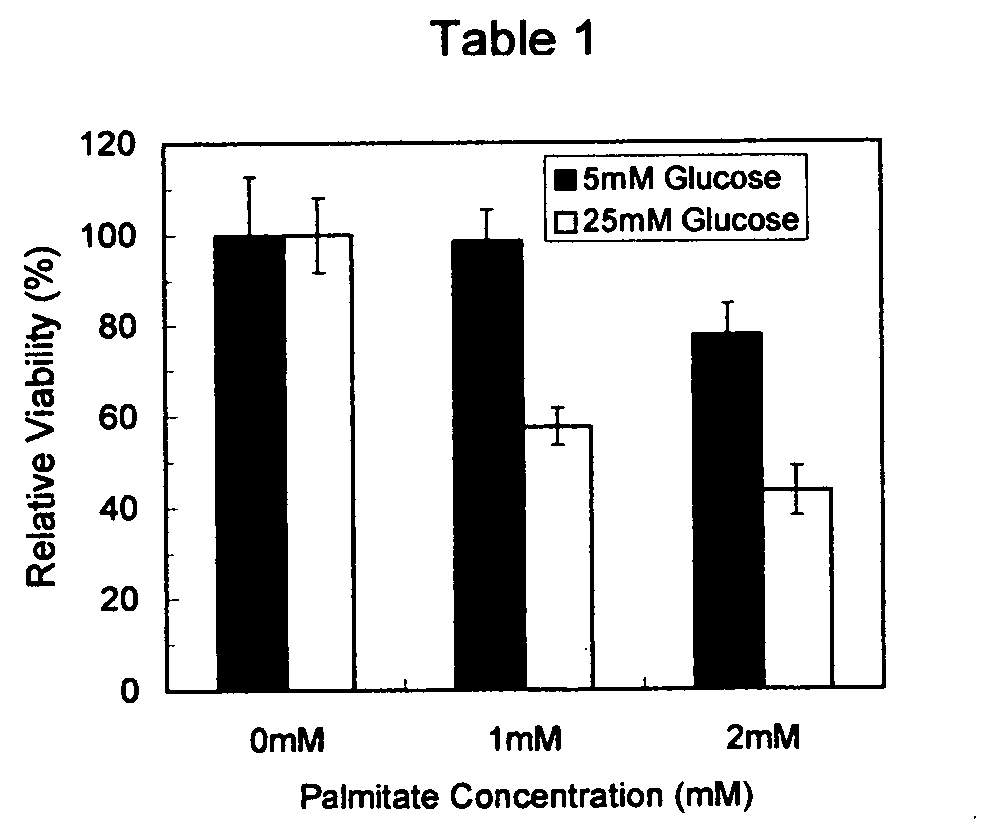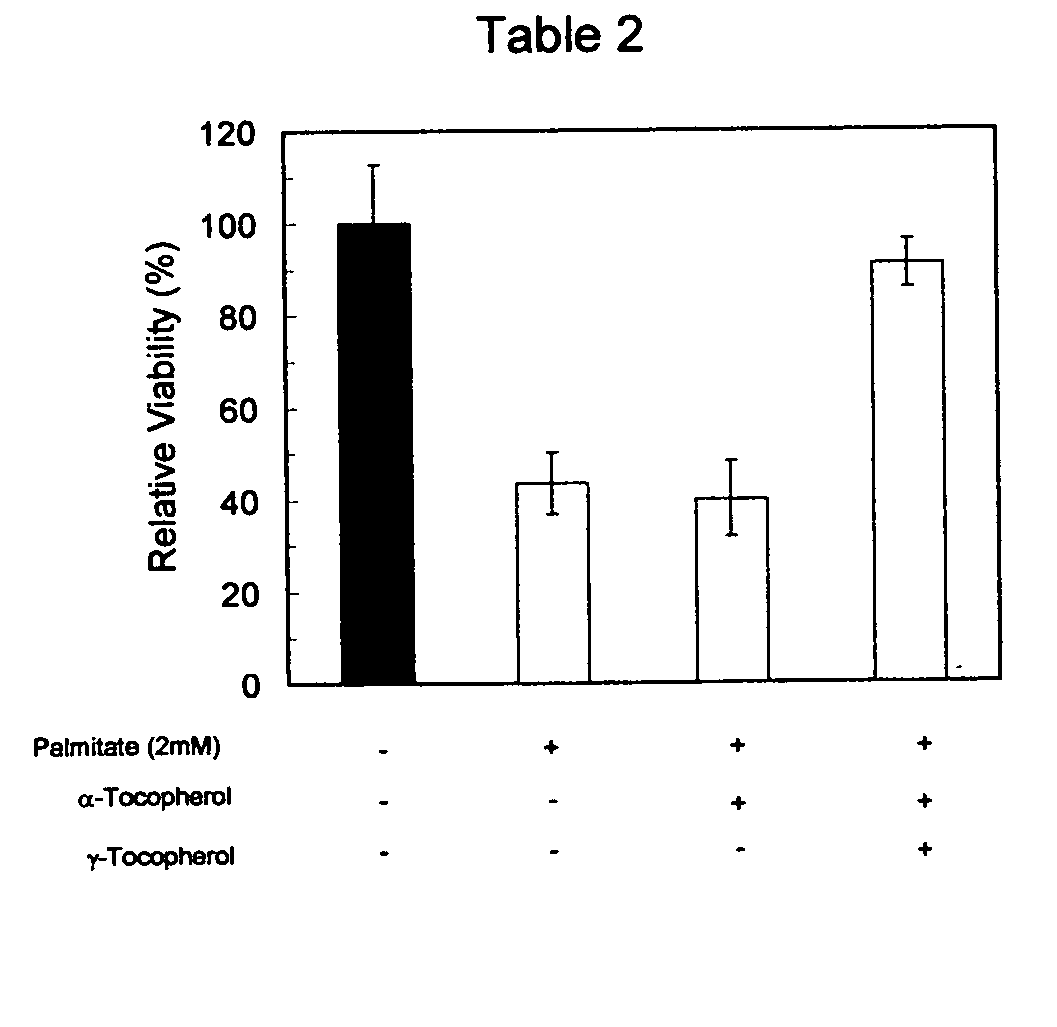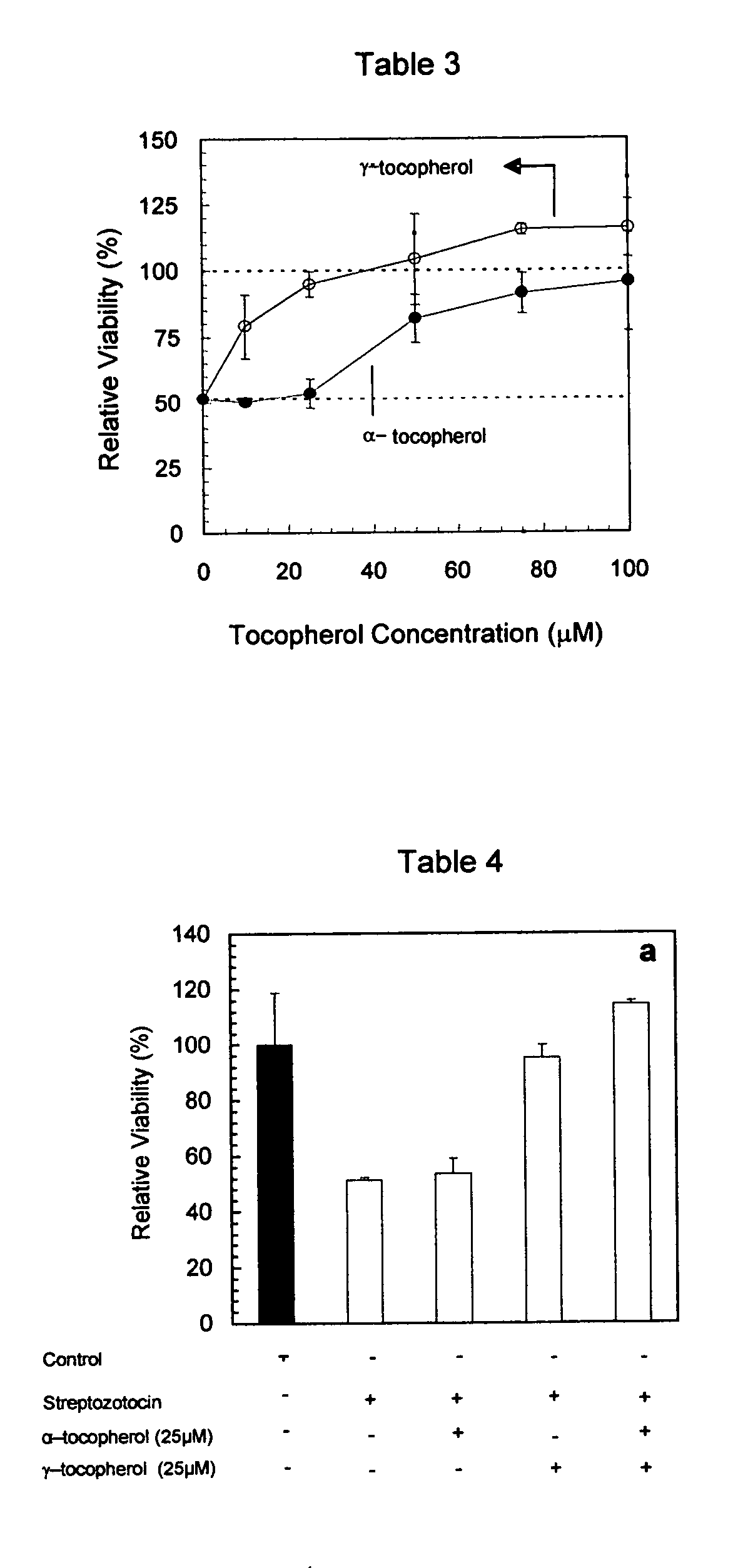Treatment for diabetic microvascular and macrovascular complications
a microvascular and macrovascular disease technology, applied in the direction of biocide, peptide/protein ingredients, heterocyclic compound active ingredients, etc., can solve the clinical significance of diabetic microvascular and macrovascular complications, deficiency of insulin secretion, and hyperglycemia
- Summary
- Abstract
- Description
- Claims
- Application Information
AI Technical Summary
Benefits of technology
Problems solved by technology
Method used
Image
Examples
example 1
[0031] Rhesus monkey retinal endothelial cells (ATCC CRL-1780) were cultured overnight in 96 well culture plates in a humidified incubator at 37° C., under either basal (5 mM) or hyperglycemic (25 mM) conditions in the absence FFA or in with a 1 and 2 mM palmitate concentration illustrating an elevated FFA environment. At the end of the incubation period endothelial cell viability was measured with the MTS assay and results were expressed relative to the control (5 mM glucose no FFA). The results are shown in Table 1, where error bars represent standard deviations from the mean of triplicate measurements per condition. The relative viability of endothelial cells exposed to hyperglycemia and elevated FFA, as compared to the control, was about 45%. The data in Table 1 illustrates that FFA are cytotoxic to retinal endothelial cells and that their cytotoxicity is enhanced by hyperglycemia.
example 2
[0032] Retinal endothelial cells were cultured overnight in 96 well culture plates in a humidified incubator at 37° C., in the presence or absence of either 50 μM of alpha-tocopherol, 50 μM of gamma-tocopherol or 25 μM alpha-tocopherol plus 25 μM gamma-tocopherol when used in combination. The cells at each condition were then cultured for an additional 8 hours either in the presence or absence of 25 mM glucose and 2 mM palmitate. Alpha-tocopherol and gamma-tocopherol concentrations in each well were kept the same as those used in the pre-incubation phase. Cell viability was measured with the MTS assay. Results were normalized and values were expressed relative to basal glucose control (relative viability).
[0033] When alpha-tocopherol was used alone (50 mM) it did not seem to offer protection from exposure to hyperglycemia and elevated FFA. The relative cell viability remained at about 40 to 50%. When gamma-tocopherol was used alone (50 mM) it provided significant protection from ex...
example 3
[0034] This example demonstrates that the cytoprotective properties shown by gamma-tocopherol and the combination of gamma-tocopherol and alpha-tocopherol in example 2 on retinal endothelial cells is also seen on rat INS-1 β-cells induced with diabetes. STZ was is a drug that induces diabetes in the INS-1 cells. STZ is thought to induce diabetes through oxidative damage. This study is valuable for illustrating the protection of alpha-tocopherol, gamma-tocopherol, and the combination of alpha-, and gamma-tocopherol against a compound that induces diabetes.
[0035] INS-1 cells were cultured overnight in 96 well culture plates in a humidified incubator at 37° C., in the presence or absence of different concentrations of alpha- or gamma-tocopherol and then in the presence of a combination of equimolar parts of gamma- and alpha-tocopherol (25 μM gamma-, 25 μM alpha-tocopherol). The cells at each condition were then cultured for an additional 24 hours either in the presence or absence of S...
PUM
| Property | Measurement | Unit |
|---|---|---|
| Percent by mass | aaaaa | aaaaa |
| Percent by mass | aaaaa | aaaaa |
| Percent by mass | aaaaa | aaaaa |
Abstract
Description
Claims
Application Information
 Login to View More
Login to View More - R&D
- Intellectual Property
- Life Sciences
- Materials
- Tech Scout
- Unparalleled Data Quality
- Higher Quality Content
- 60% Fewer Hallucinations
Browse by: Latest US Patents, China's latest patents, Technical Efficacy Thesaurus, Application Domain, Technology Topic, Popular Technical Reports.
© 2025 PatSnap. All rights reserved.Legal|Privacy policy|Modern Slavery Act Transparency Statement|Sitemap|About US| Contact US: help@patsnap.com



